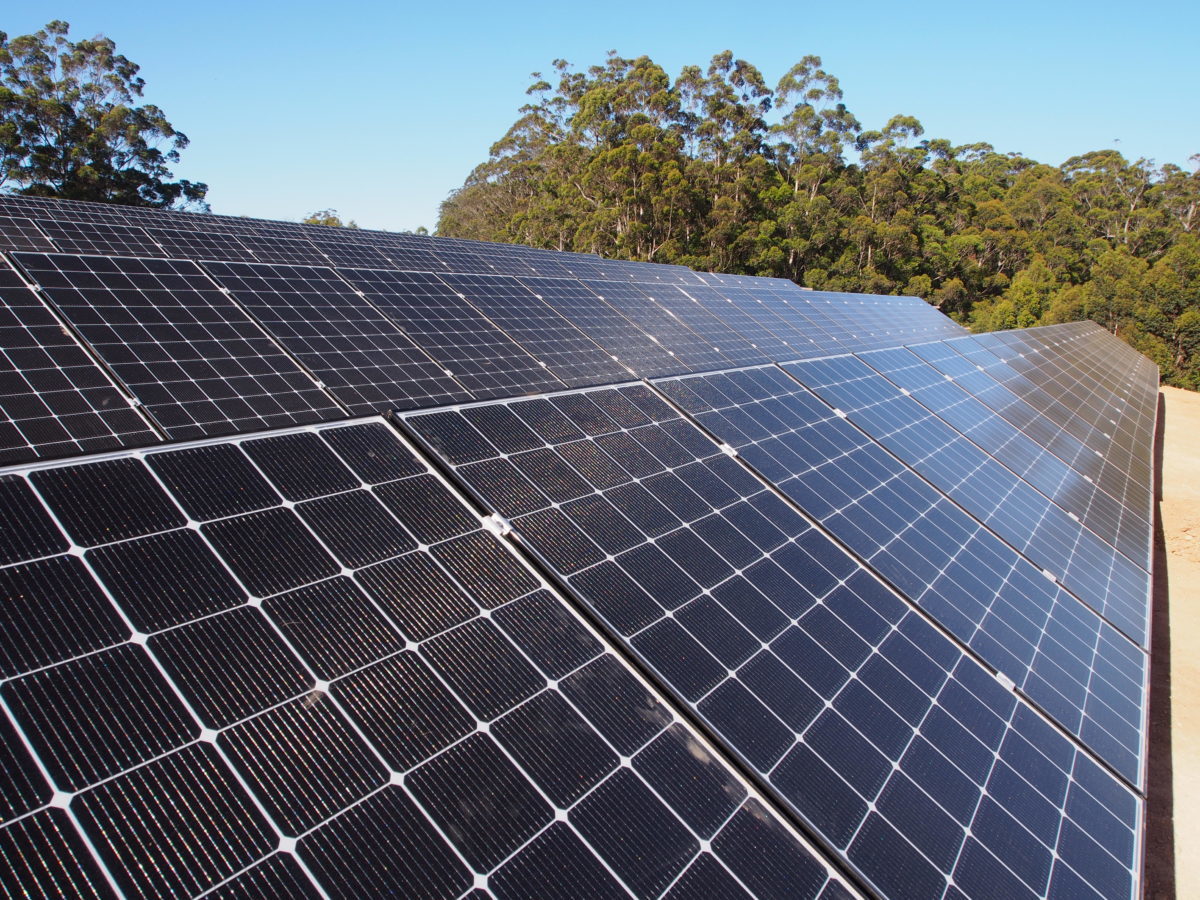First established seven years ago, and producing commercial harvests of avocados for the past three years, a five-hectare farm in Pemberton, Western Australia, decided to go completely off-grid. As of June 21, 2018, it had been operating for 660 days on self-generated power.

The farm is powered by the combination of a 53 kW solar PV installation, which feeds into a 160 kWh saltwater battery system from U.S. producer Aquion Energy and a 48 kWh lithium-ion battery from German manufacturer Tesvolt.
Though the farm’s owners were keen on 100% self-sufficiency, further impetus for the project was provided by the high costs they would have had to pay to expand the regional grid to meet increased electricity demand.
The system powers all of the farm’s operations, including an irrigation system, which pumps rain water stored in tanks during the winter across the five-hectare farm, during Western Australia’s hot, dry summer season. Power is also provided to the living quarters of the farm’s workers – the number of whom varies throughout the season.
According to Torsten Ketelson, founder and CEO of EPC Unlimited Energy and a Tesvolt representative in Australia, for such a large commercial project with considerable electricity requirements to cut its physical connection to the regional grid, represents a big vote of confidence in the technology.
The installation initially consisted of only the PV array and saltwater battery, which Ketelson points out was the only technology that carried a green certificate at the time. This system, however, was ultimately not large enough for the farm to go fully self-sufficient, and the 48 kWh Tesvolt battery was added to rectify this.
The saltwater battery is described by Ketelson as a ‘workhorse’ and has some advantages – particularly the ability to operate at temperatures in excess of 50°C without the need for cooling – but the battery discharges much more slowly, limiting its ability to deal with peak loads. Ketelson also points out that the battery’s performance is highly temperature dependent – with its capacity dropping considerably at lower temperatures, and that the Tesvolt system takes up considerably less space.

“The whole system would not function without the high performance of the Tesvolt energy storage solution,” says Unlimited Energy CEO, George Zombori. “Above all, a fast charging and discharging speed was important to us to allow for the water pumps to start up. While the Tesvolt storage system absorbs peak loads, the salt water battery system takes care of the base load. “As a matter of fact, the Tesvolt system could do all the work.”
Both energy storage systems work with 18 kW SMA Sunny Island inverters, and the Tesvolt battery can be charged in a little over two hours – on the day that pv magazine met with Torsten Ketelson at the Smarter E in Munich, Germany, the load was around 10 kW, at 9am Australian time the charge hit a low of 55%, and by 1pm it had recharged with energy from the PV array back to 70%.
Keeping it simple
Energy management for the system is kept simple. Energy is transferred to a heating element to provide hot water. If the battery charge falls below 80%, this is switched off. If the charge goes below 60%, a heating system for the living quarters is switched off, in addition to further systems, ending with the lights. Ketelson says that the first six months in operation show that system is working well – it is winter in Australia, and the hardest period for the system to operate, he says.
The project also appears to have brought some inspiration to the region: Pemberton’s local council is reportedly in the early stages of planning a microgrid to power its administrative buildings; a project which Ketelson says Unlimited Energy would be keen to take on.
The project shows why relying on PV plus storage is a ‘no brainer’ in many regions. In Australia, for example, many off-grid and rural regions are powered only by diesel generators which, thanks to the cost of transporting diesel to far flung areas, have costs in the region of AU$1.04 (US$0.77), while a solar plus storage system can bring this down to less than AU$0.22 (US$0.16).
This content is protected by copyright and may not be reused. If you want to cooperate with us and would like to reuse some of our content, please contact: editors@pv-magazine.com.









By submitting this form you agree to pv magazine using your data for the purposes of publishing your comment.
Your personal data will only be disclosed or otherwise transmitted to third parties for the purposes of spam filtering or if this is necessary for technical maintenance of the website. Any other transfer to third parties will not take place unless this is justified on the basis of applicable data protection regulations or if pv magazine is legally obliged to do so.
You may revoke this consent at any time with effect for the future, in which case your personal data will be deleted immediately. Otherwise, your data will be deleted if pv magazine has processed your request or the purpose of data storage is fulfilled.
Further information on data privacy can be found in our Data Protection Policy.